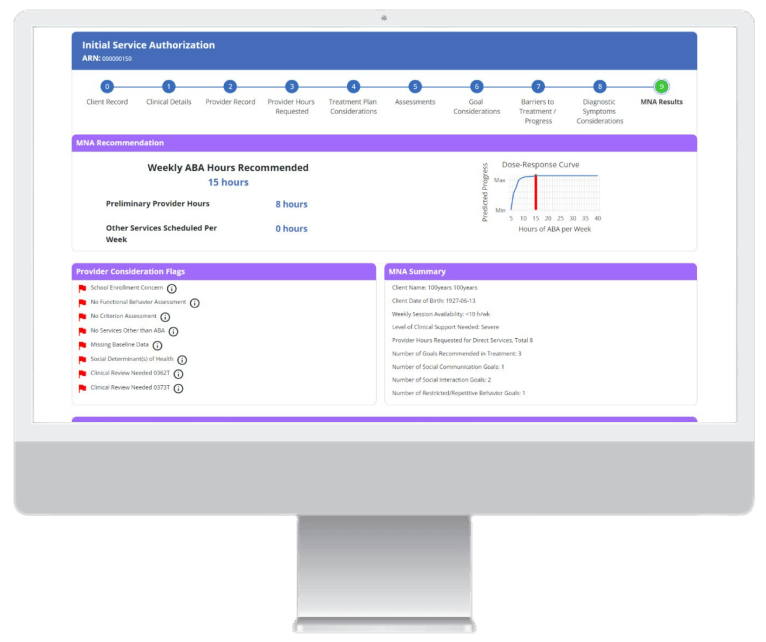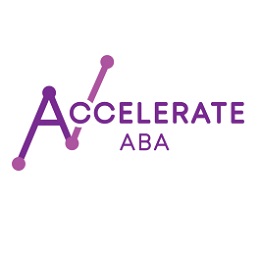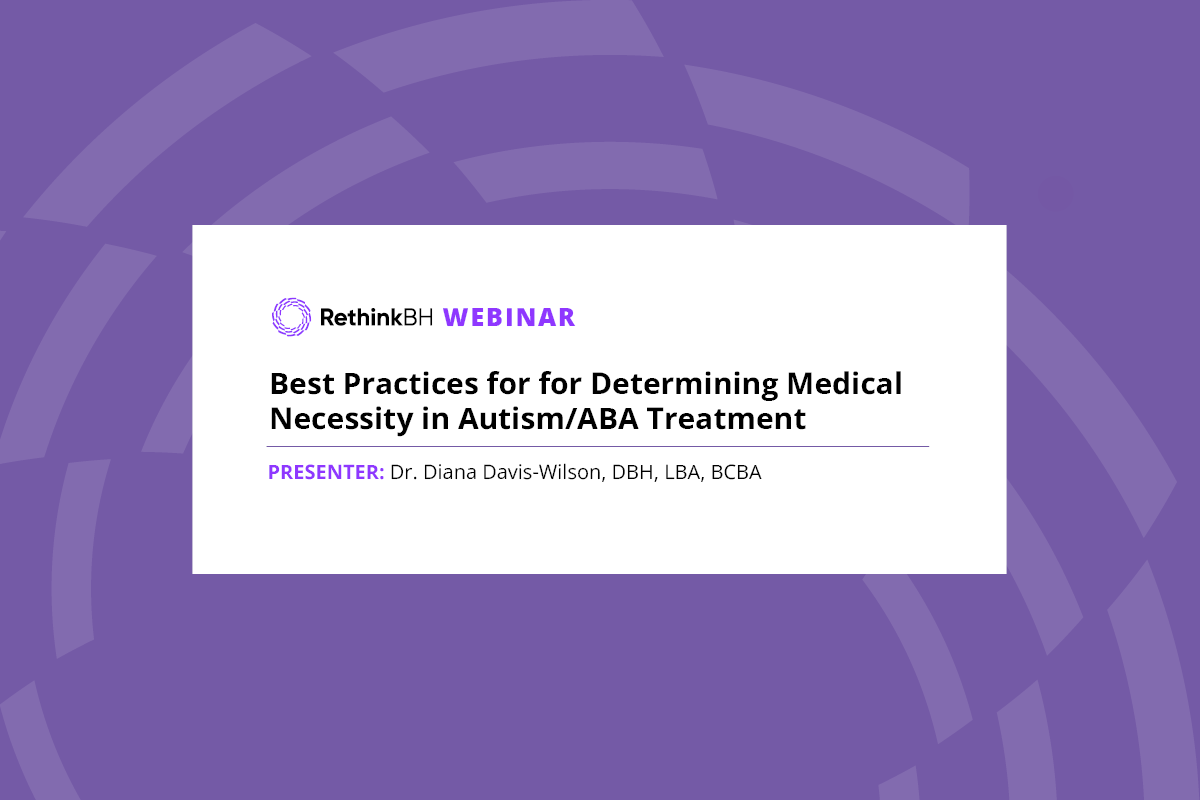Medical Necessity Assessment
RethinkBH’s AI-driven patent-pending clinical decision support tool for guiding treatment plan recommendations.

Research shows that ABA treatment for autism is most effective when treatment intensity and clinician adherence to recommended dosage are optimized.
Proper dosage can significantly improve skill acquisition, behavior reduction, and overall outcomes. However, challenges such as communication barriers, insufficient clinician training, policies and benefit limitations from funding sources, and limited research can negatively impact these outcomes.
Leveraging millions of data points, Rethink’s patent-pending Medical Necessity Assessment tool is now driven by cutting-edge AI and clinical best practices. Powered by the world’s largest published dataset of autism services data, our tool provides accurate, patient-specific, optimized ABA dosage recommendations, ensuring the best possible outcomes for individuals with autism.
Users of the Medical Necessity Assessment can expect – among other benefits – AI-powered objective ABA dosage individualized per client need, consistency across authorizations (per BCBA and across practices), automated flags to highlight possible gaps in care/treatment, a path to more informed conversations with caregivers, and optimized treatment plan quality and outcomes.
Request a demo today to learn how to access Rethink’s Medical Necessity Assessment tool.
Leverage AI to Enhance Your Clinical Decision Making Process

What Can Rethink's Medical Necessity Assessment Do for You?
Advocacy
Bridge the language barriers with payors and caregivers when it comes to getting your requests approved and family adherence to treatment.
Consistency
Provide your staff with a standard for documentation when submitting treatment plans to ensure clinical reports meet funders’ requirements.
Education
Train clinicians to appropriately recommend ABA dosages for clients by embedding the Medical Necessity Assessment tool into the decision-making process.
Research
Contribute to future research to strengthen prescription recommendations across populations and optimize clinical outcomes for clients.
Frequently Asked Questions
The platform includes a Medical Necessity Assessment tool that helps clinicians justify treatment hours, improve documentation accuracy, and streamline insurance approvals.
The MNA helps ABA providers strengthen insurance authorization by offering evidence-based, objective, and well-documented treatment plan recommendations. Some of the benefits include:
- Standardization & Consistency: Delivers consistent metrics and documentation across clients and providers, which helps satisfy insurance / payer criteria.
- Evidence-backed dosage recommendations: Because recommendations are built on published research and large datasets, payers are more likely to accept the recommended hours.
- Transparent rationale: The report from the MNA shows how particular hours were determined (which diagnostic, environmental, learning, or dosage factors contributed) so that payers can see the clinical reasoning.
Improved communication with caregivers & payers: The tool can help providers explain and justify treatment hours more clearly, reducing pushback.
RethinkBH’s MNA draws on multiple data points and clinician inputs to produce evidence-based dosage recommendations. Key inputs include:
- Client history and diagnostic information: severity of autism spectrum disorder, co-occurring conditions
- Learning and environmental considerations: such as responsiveness to treatment, family involvement, school or home environment
- Treatment model & planning considerations: including goals, skill domains, social behaviors
- Dosage considerations: frequency, intensity, duration of direct services
This combination helps ensure that suggested ABA hours are tailored to each client’s needs rather than using a “one-size-fits-all” approach.
Clinics can design flexible therapy programs by combining assessment tools, modular treatment plans, and practice management technology. Data-driven adjustments, secure patient portals, and standardized templates help ensure care is personalized, compliant, and easy to manage.
Typically, the MNA should be used initially when you are recommending treatment for a new client, then updated or re‐authorized periodically to ensure treatment remains appropriate. Specifically:
- Initial Assessment: when services are first being proposed.
- Concurrent / Re-authorization Assessment: at regular intervals (often about every 6 months, or according to payer/funder requirements) to reassess treatment progress, changing client status, or if treatment goals need revision.
- When there are significant changes: so that the treatment hours reflect current clinical needs (client gains, regressions, environmental changes, etc.)
What People Are Saying


We were interested in an all encompassing provider of billing as well as clinical services. After researching and speaking with companies who provide similar services, we found the RethinkBH interface to be the easiest to use while also meeting the data collection, scheduling, session note, and billing services that we needed.
Carolyn Volpe, MS, BCBA, LBA
Co-Owner
at Accelerate ABA
Tips, Tools and Resources to Support Your Team and Mission
Introduction As professionals in the field of Applied Behavior Analysis (ABA), we have a unique...
Data discussed is based on prior version of the Medical Necessity Assessment (MNA) tool. MNA...
Data discussed is based on prior version of the Medical Necessity Assessment (MNA) tool. MNA...


